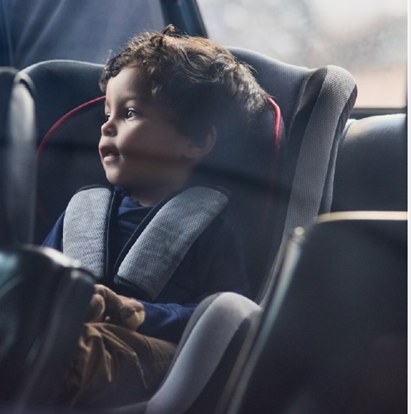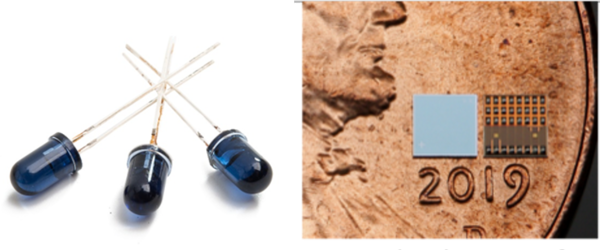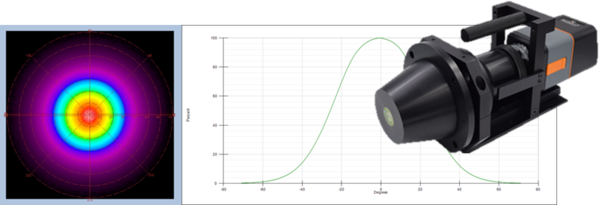The Latest In-Vehicle Sensing Applications: Near-Infrared Light for DMS & OMS
Automobiles are getting smarter and smarter, as new innovations in monitoring, sensing, advanced driver assistance (ADAS), and diagnostic systems continue to enhance vehicle performance, comfort, and safety. From the latest headlamps that self-adjust to ambient light and weather conditions, to facial recognition unlock features, to fully autonomous vehicles that monitor and respond to the 360-degree environment, designers and manufacturers keep advancing new concepts and capabilities.
To provide these new smart vehicle features, automakers are incorporating a wide range of technologies, including radar, cameras with AI image processing, infrared thermal sensing, near-infrared (NIR) Light Detection and Ranging (LiDAR) systems, and more.
One category of sensing systems being developed are for in-cabin applications, including Driver Monitoring Systems (DMS) and Occupant Monitoring Systems (OMS). Like LiDAR, automotive DMS and OMS rely on NIR sensing. Invisible wavelengths of NIR light bounces off interior surfaces and objects, capturing information such as the location of drivers and occupants inside the vehicle, their positions, and their status.

Applications of In-Cabin Sensing
The significance of in-cabin sensing systems for driver and passenger safety and convenience is hastening their adoption. For DMS, NIR light can be used to unobtrusively monitor driver alertness, gaze, presence, and position to prevent accidents due to distraction or drowsiness behind the wheel. In the future, such systems could be leveraged for facial recognition to enable vehicle personalization, automatically adjusting settings like seat and mirror position, temperature, and infotainment for each driver’s personal preferences. The car could do the same for a passenger, sans adjustments that pertain only to driving.
The same monitoring approach could be used to check for the presence of an infant or pet in the rear seat of a vehicle, monitoring temperature and occupant condition and helping to prevent the tragedy of hot car deaths.1 Recognizing the potentially life-saving benefits of in-cabin sensing, regulatory bodies have been quick to start devising new rules for incorporating these systems in future automobile models.

An average of 39 children perish in the U.S. each year due to heatstroke in cars2 along with hundreds of pets. Beginning in 2022, the Euro NCAP will provide rewards for cars that include Child Presence Detection (CPD) technology that can detect children left alone or trapped in cars and alert the vehicle owner and emergency services of danger. As of 2020, the U.S. has begun developing similar legislation.
This year, the European Union has mandated DMS and other safety systems in new vehicles by 2022, and the United States is soon to follow, employing the “Stay Aware for Everyone” (SAFE) Act of 2020. Additionally, the European New Car Assessment Programme (Euro NCAP) has announced that it will reward manufacturers that offer Child Presence Detection as a standard feature beginning in 2022, (e.g., sensing systems to monitor the safety of children left unattended in vehicles), which may employ NIR-based sensing in other areas of the cabin.
The Technology Behind DMS & OMS: NIR Light Sources
Automakers and suppliers are under pressure to implement sensing technologies quickly and effectively, with the role and performance of NIR light sources gaining new significance within the vehicle. To incorporate this capability, manufacturers are using either NIR LEDs or NIR lasers, typically VCSELs (vertical cavity surface emitting lasers).

Left: NIR LEDs. Right: front and back of a mobile phone NIR VCSEL chip, on a penny for scale. (Image: Copyright TriLumina Corporation, used with permission)
NIR LEDs are used in devices from remote controls and facial recognition systems, to security cameras and medical instruments. LEDs are advantageous for NIR sensing because they cast a wide distribution of NIR light, covering a large field of view without gaps in 3D spatial sensing area. While NIR LEDs are typically less expensive, NIR lasers offer advantages that are driving their rapid adoption for some automotive applications.
For example, NIR lasers can be directed and reflected with greater precision than LEDs. Because of its spatial coherence and focus, laser light can pass through small openings, making it easy to integrate and manipulate through diffractive optical elements (DOE). NIR VCSEL lasers enable 3D imaging solutions with superior depth measurement and mapping capabilities, using structured light (light projected in a defined pattern) and time of flight (ToF) approaches for applications such as facial identification and gesture recognition.
NIR light sources need to be invisible and eye-safe to avoid distracting or harming the vision of those in the vehicle. Such sources rely on specific NIR wavelengths for operation, at specific intensities, to ensure sufficient power for sensing in all ambient lighting conditions, as well as safety for human visual exposure. NIR light sources used in the vehicle are distributed in specific geometries to cover areas such as a driver’s face, relying on either the uniform angular distribution of LED sources, or the patterns created by diffracted laser light.
Measuring NIR Light Sources to Ensure Accuracy
Because NIR emissions (from LEDs or lasers) can be dangerous to human vision, NIR light sources must be carefully measured to ensure their performance is within the intended range for use around people.3 When measuring a single NIR emitter, for example, all angular distribution points must be captured. Missing any point during measurement may mean missing an irregularly strong emission that could prove hazardous to the user, especially over time.
An NIR light source measurement system should be able to directly measure the intensity of a source across any potential geometric distribution in 3D space. Such a system may employ Fourier optics to capture all angular emission data from a single point (light source) to be evaluated as a 2D image by a radiometric camera. Already deployed in several NIR sensing applications, Radiant’s NIR Intensity Lens solution combines a ProMetric® Y16 Imaging Radiometer with a specially designed Fourier optic lens to capture 3D light emissions across ±70 degrees in a single 2D polar measurement. This compact system reduces the cost and complexity of angular light source measurement over traditional systems like goniometers, and captures an entire light source distribution (whether a uniform angular distribution of an LED, or pattern produced by a laser) in as little as a second without rotation or moving parts.

Polar plot (left) and cross section (right) showing radiant intensity as a function of angle of an NIR LED, captured by the Radiant NIR Intensity Lens and analyzed in TT-NIRI™ Software. Radiant’s NIR Intensity Lens solution incorporates a ProMetric Y16 Radiometric camera mounted to a specially designed lens (inset).
A new generation of automotive sensing applications using NIR emitters demands new approaches to product testing to ensure the performance and accuracy of these invisible light sources. Applications such as DMS and OMS that are used on and around humans require rigorous testing to comply with internal and industry standards. Radiant’s near-IR measurement solutions are proven for characterizing the output of NIR sources with notable benefits in efficiency, providing manufacturers with quick and comprehensive data to ensure standards compliance.
To learn more about the trends, applications, and measurement considerations related to in-cabin NIR sensing systems, watch the recent webinar “Near-infrared light for in-cabin sensing and driver monitoring systems (DMS)” presented at the Intelligent Lighting Online conference on September 29, 2020. In the webinar, Matt Scholz, Automotive Business Leader at Radiant Vision Systems, discusses:
- The role of NIR light for DMS and in-cabin sensing
- Component comparison: LEDs, lasers (VSCELs), and their applications
- Performance considerations of NIR components for automotive interiors
- How to measure NIR components for safe and effective sensing
The webinar is available to view on demand with free registration.

CITATIONS
- Hogan, H., “Car In-Cabin 3D Sensing Is Within Sight,” Photonics Spectra, April 2020.
- “You Can Help Prevent Hot Car Deaths”, National Highway Traffic Safety Administration, U.S. Department of Transportation. (Retrieved October 9, 2020).
- Corning, A., “Measuring NIR Sources for Safe and Accurate 3D Sensing”, Photonics Spectra, March 2019.
Join Mailing List
Stay up to date on our latest products, blog content, and events.
Join our Mailing List
